Is Physio Or Chiro Better For Hip Pain
As someone who has experienced the frustrating and debilitating effects of hip pain, I understand the desperate search for relief and the desire to find innovative solutions.
When it comes to treating hip pain, two common options are physiotherapy and chiropractic care. Both approaches offer unique benefits and have their own methods of addressing the underlying causes of discomfort.
In this article, we will explore whether physio or chiro is better for hip pain, diving into their different approaches, treatment options, recovery processes, and collaborative care possibilities. We will answer the question: Is physio or chiro better for hip pain?
When faced with hip pain, it can be challenging to know which path to choose in order to find effective relief. Physiotherapy focuses on improving mobility, strength, and function through targeted exercises and manual therapy techniques. On the other hand, chiropractic care aims to align the spine properly in order to alleviate stress on various parts of the body including the hips. By examining these distinct approaches side by side, we can gain a clearer understanding of which may be more suitable for our individual circumstances.
Innovation lies not only in discovering new treatments but also in exploring how different modalities can work together harmoniously to enhance overall outcomes. By delving deeper into the world of physiotherapy and chiropractic care for hip pain management, we can uncover potential synergies that might lead us towards a more effective rehabilitation journey.
So let's embark on this exploration together as we seek out innovative ways to alleviate hip pain and restore optimal function in our daily lives.
Physio Vs. Chiro
Physiotherapy and chiropractic treat hip pain differently. Physiotherapy improves hip mobility and muscle strength through therapeutic exercises. Physiotherapists look at the hip and other areas of the body that may be causing pain. Physiotherapists customize their treatments for each patient.
However, chiropractors use manual adjustments and manipulations to correct spine misalignments that cause hip pain. Chiro corrects musculoskeletal alignment and function. Chiropractors treat these misalignments to relieve nerve pressure and hip pain.
Your preferences and needs should guide your choice between physiotherapy and chiropractic for hip pain treatment. In physiotherapy, ultrasound, heat or cold therapy, and joint mobilization exercises are used to treat hip pain. Emphasizing patient self-management education to prevent future injuries is also important.
Conversely, chiropractic care can relieve hip pain immediately by correcting spinal misalignments. Chiropractors recommend lifestyle changes and exercises for long-term recovery. Physiotherapy and chiropractic care can treat hip pain, so choosing one depends on your goals and comfort with different treatments.
Injury Treatment
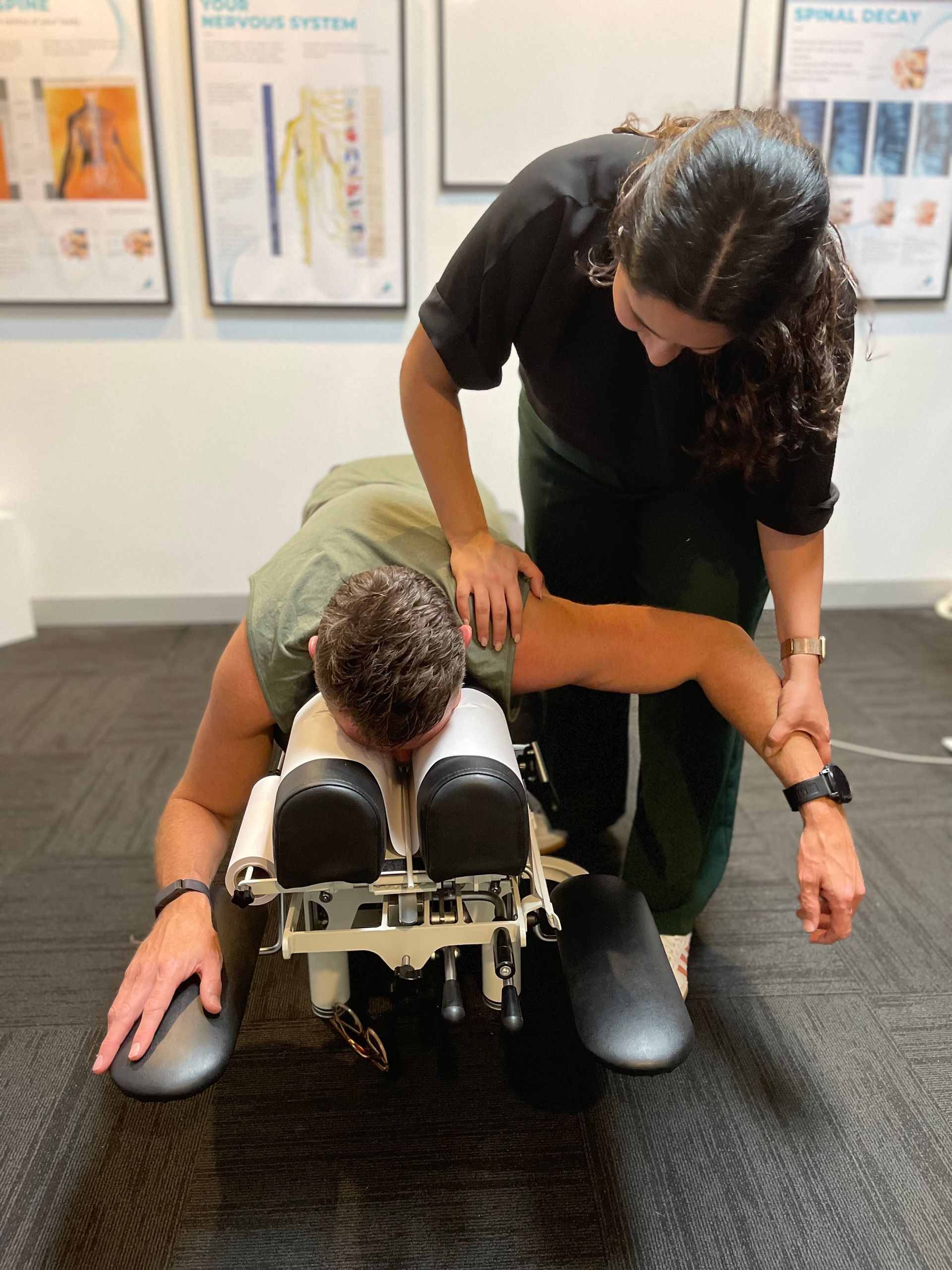
Find the best hip-pain treatment by trying different ones. Physiotherapists and chiropractors treat hip pain well.
Physiotherapy improves hip strength, flexibility, and mobility through exercises, stretches, and manual therapy. However, chiropractic care uses spinal adjustments and manipulations to realign and relieve pressure.
Physiotherapy may be best for hands-on injury rehabilitation. Physiotherapists evaluate your condition and create a customized treatment plan. They will lead you through targeted exercises and stretches to strengthen your hip muscles and improve your range of motion. Manual therapies like massage and joint mobilization may also reduce pain and inflammation.
However, chiropractors align the spine, which can indirectly relieve hip pain. Chiropractors believe realigning the spine can relieve nerve pressure that may be causing hip pain. Chiropractic adjustments have helped many hip pain sufferers, unlike physiotherapists.
Choosing a physiotherapist or chiropractor for hip pain treatment depends on your needs and preferences. Both professions have unique ways to treat your pain. Before choosing based on your needs, consult professionals from both fields.
Physiotherapists Vs Chiropractors
When choosing between physiotherapists and chiropractors for hip pain, know their methods. Physiotherapists and chiropractors treat hip pain well. They view the issue differently.
There are three main differences in hip pain treatment between physiotherapists and chiropractors:
- Approach: Physiotherapy focuses on rehabilitation through exercises, manual therapy techniques, and education. Physiotherapists assess your overall movement patterns and address any underlying issues that may be contributing to your hip pain. On the other hand, chiropractic care centers around spinal adjustments as a primary treatment method. Chiropractors believe that misalignments in the spine can cause imbalances throughout the body, leading to various conditions including hip pain.
- Treatment Techniques: Physiotherapists utilize a wide range of techniques such as joint mobilization, soft tissue massage, stretching exercises, and strengthening exercises tailored specifically to your needs. They aim to improve flexibility, strength, and stability in the hip region while addressing any biomechanical factors that may be causing or exacerbating your pain. Chiropractors primarily use spinal adjustments or manipulations to restore proper alignment of the spine and alleviate nerve interference thought to contribute to hip pain.
- Holistic Approach vs Targeted Intervention: Physiotherapy takes a holistic approach by considering how various factors like posture, muscle imbalances, lifestyle habits, and previous injuries might be affecting your hip health. This allows them to create personalized treatment plans that address both immediate symptoms as well as long-term prevention strategies. In contrast, chiropractic care often involves targeted interventions focused on correcting specific spinal misalignments believed to be responsible for your symptoms.
Difference In Approach
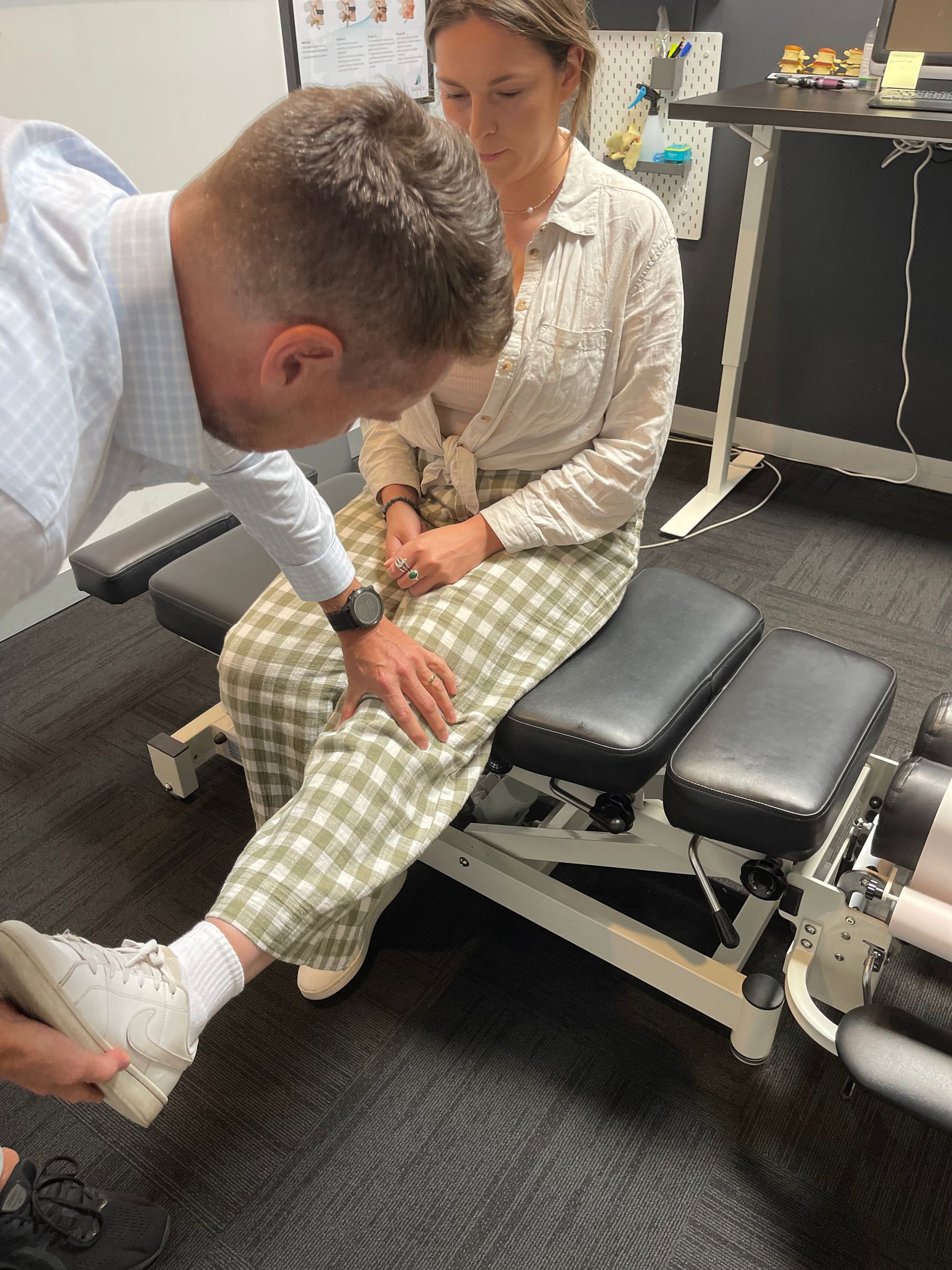
I find it fascinating how physiotherapists and chiropractors treat hip pain from different perspectives.
Physiotherapists treat hip pain with exercises, stretches, and manual therapy. They use personalized exercises to improve hip flexibility, strength, and function.
Chiropractors use joint manipulation to correct hip pain-causing imbalances. Hip-pain treatment by physiotherapists is often holistic. They consider both direct symptoms and underlying issues that may be causing pain.
Physiotherapists can address muscle imbalances and poor posture to reduce pain and prevent future occurrences. Physiotherapists teach patients proper body mechanics and self-management for long-term relief.
Although chiropractors treat hip pain, they focus on spinal adjustments and joint manipulation. They believe spine misalignments can cause hip dysfunction. They manipulate these joints to restore proper movement and relieve pain. Chiropractors may use ultrasound or electrotherapy for additional benefits.
Diagnosis And Assessment
Although their treatment methods differ, physiotherapists and chiropractors prioritize accurate diagnosis and thorough assessment to determine hip pain's cause.
A physiotherapist starts with a thorough medical history, a physical exam, and a functional assessment. The physiotherapist may use range of motion tests, muscle strength tests, and specialized imaging studies to evaluate the hip joint and surrounding structures.
Chiropractors also stress the importance of a thorough exam to detect spine misalignments that may cause hip pain. Besides physical examination, physiotherapists and chiropractors consider lifestyle habits, occupation, and previous injuries when diagnosing hip pain. These holistic approaches allow physiotherapists and chiropractors to consider all relevant information for an accurate assessment.
Physiotherapists identify muscular imbalances or weaknesses as common causes of hip pain. They may also examine daily or sports-specific movement patterns to identify biomechanical issues causing pain.
However, chiropractors focus on spinal alignment because misalignments can disrupt nerve function and cause hip pain. Chiropractors manipulate the spine to realign it and relieve nerve pressure that may cause hip pain.
Physiotherapists and chiropractors treat hip pain by prioritizing thorough diagnosis and assessment tailored to each patient's needs. Chiropractic care corrects spinal alignment through manual adjustments, while physiotherapy addresses muscular imbalances through exercises, stretches, and physical modalities like heat or cold therapy.
Benefits Of Physiotherapy
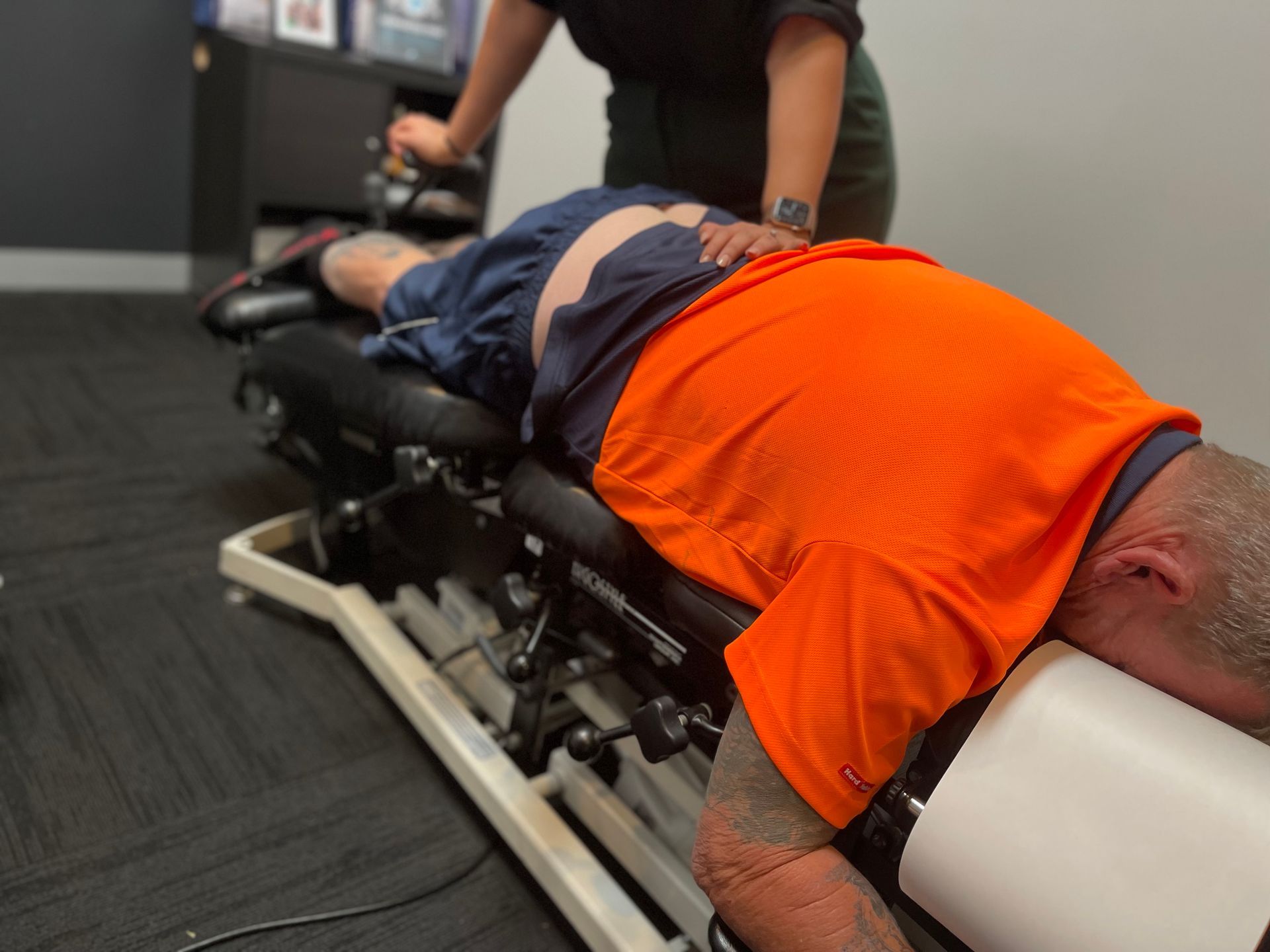
Physiotherapy improves mobility and daily function. Physiotherapy can relieve hip and joint pain and improve your health.
A major benefit of physiotherapy is its ability to pinpoint the cause of hip pain. Physiotherapy restores hip alignment and stability by identifying and correcting muscle and tissue imbalances.
Besides treating hip pain, physiotherapy improves flexibility and strength. Physiotherapists use targeted exercises and stretches to improve range of motion, muscle tightness, and healing. By optimizing hip structures, this relieves immediate pain and prevents future injuries or flare-ups.
Physiotherapy considers other causes of hip pain when treating it holistically. This could involve examining your posture, gait, or daily movements. By identifying lifestyle and ergonomic factors, a physiotherapist can tailor treatment to your needs.
Physiotherapy offers innovative hip pain management by focusing on short-term relief and long-term prevention. This non-invasive treatment has helped many hip pain sufferers reduce pain, inflammation, and improve function and quality of life. Physiotherapy empowers patients to manage their health with personalized care and evidence-based methods.
Benefits Of Chiropractic Care
Physiotherapy improves mobility and daily function. Physiotherapy can relieve hip and joint pain and improve your health.
A major benefit of physiotherapy is its ability to pinpoint the cause of hip pain. Physiotherapy restores hip alignment and stability by identifying and correcting muscle and tissue imbalances.
Besides treating hip pain, physiotherapy improves flexibility and strength. Physiotherapists use targeted exercises and stretches to improve range of motion, muscle tightness, and healing. By optimizing hip structures, this relieves immediate pain and prevents future injuries or flare-ups.
Physiotherapy considers other causes of hip pain when treating it holistically. This could involve examining your posture, gait, or daily movements. By identifying lifestyle and ergonomic factors, a physiotherapist can tailor treatment to your needs.
Physiotherapy offers innovative hip pain management by focusing on short-term relief and long-term prevention. This non-invasive treatment has helped many hip pain sufferers reduce pain, inflammation, and improve function and quality of life. Physiotherapy empowers patients to manage their health with personalized care and evidence-based methods.
Benefits Of Chiropractic Care
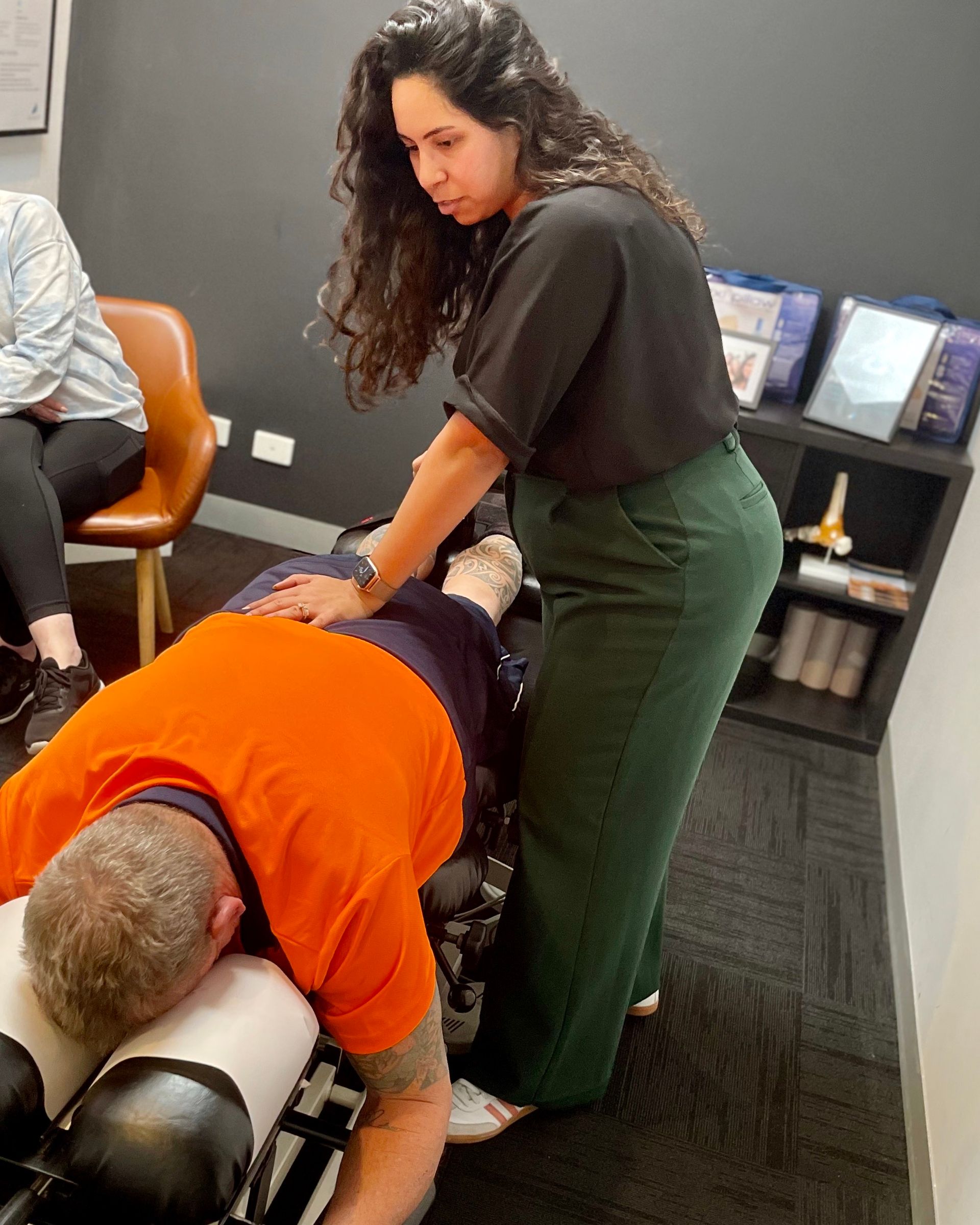
Physiotherapy has many hip pain benefits. However, you should consider all options, including chiropractic care. A holistic approach to spine and nervous system alignment, chiropractic care can improve health and wellbeing.
What are hip pain chiropractic benefits?
- Pain Relief: Chiropractors use various techniques such as spinal adjustments and manipulations to alleviate pain in different parts of the body, including the hips. By realigning the spine and improving joint function, chiropractic care can help reduce inflammation and relieve pressure on the affected area.
- Improved Mobility: Hip pain can significantly affect mobility and make simple tasks like walking or sitting difficult. Chiropractors work to restore proper movement in the joints through adjustments and exercises that target specific muscles. This improved mobility not only reduces pain but also enhances overall functionality.
- Non-Invasive Approach: One major advantage of chiropractic care is that it's non-invasive and drug-free. Unlike some other treatments for hip pain, such as surgery or medication, chiropractic care focuses on natural methods to promote healing and relieve discomfort.
Choosing A Healthcare Provider
Is physio or chiro better for hip pain? Choosing a hip pain doctor requires careful consideration of several factors. Both physiotherapy and chiropractic care have benefits.
Physiotherapy uses manual therapy, rehabilitative exercises, and other methods to reduce pain and improve mobility. Chiropractic care focuses on spinal adjustments and manipulations to relieve hip pain. The choice between these two methods depends on your condition, preferences, and goals.
If you prefer holistic healthcare, chiropractic may be for you. Chiropractors see spinal realignment as a whole-body treatment. Chiropractors adjust spinal misalignments to restore balance and indirectly relieve hip pain. This method may work if posture or spinal alignment is causing your hip pain.
However, physiotherapy may be better if you want exercise and hands-on therapy. Physiotherapists learn hip-specific stretching, joint mobilization, and soft tissue massage. They can also recommend lifestyle changes and home exercises for long-term healing.
Choosing between physiotherapy and chiropractic care depends on your needs and preferences. It may be helpful to consult with both types of doctors before making a decision. For best results, find an experienced hip pain specialist.
Hip Pain Management
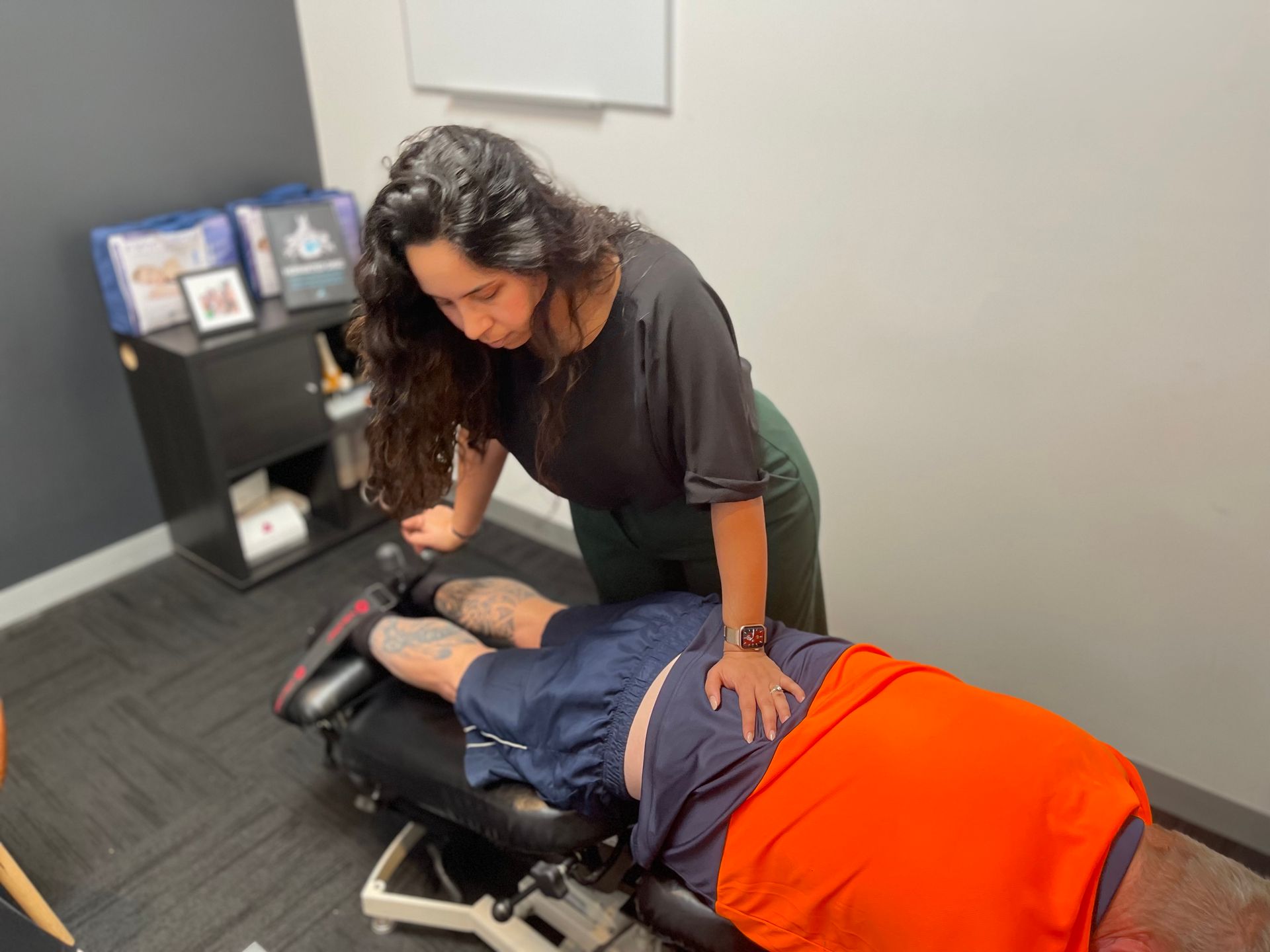
Hip pain patients have several healthcare providers to choose from. The previous section stressed the importance of choosing a healthcare provider based on qualifications, experience, and personal preference. Let's discuss hip pain management.
Hip pain can be debilitating and disrupt daily life. Luckily, there are ways to reduce this pain. Popular methods include physiotherapy and chiropractic. Physiotherapists and chiropractors treat hip pain and other musculoskeletal conditions.
Physiotherapists specialize in movement and function. They use manual therapy, exercises, and stretches to improve hip mobility, reduce pain, and strengthen muscles. Hip pain physiotherapy treats both symptoms and causes.
Chiropractors focus on spinal adjustments to restore body alignment and balance. Despite not treating hip pain, chiropractic adjustments can improve body mechanics and reduce pain.
Incorporating an unordered 5 item bullet list:
- Physiotherapists employ targeted exercises to strengthen muscles supporting the hip joint.
- Chiropractors use spinal adjustments to optimize body mechanics which may indirectly benefit hip pain.
- Both approaches aim to address underlying causes of hip pain rather than just managing symptoms.
- Physiotherapy emphasizes movement and function improvement while chiropractic care focuses on spinal alignment.
- The choice between physio or chiro depends on personal preference and specific needs regarding treatment goals.
Treatment Options
Let's examine hip pain treatment options to manage and relieve pain. Physiotherapy and chiropractic care can help with hip pain.
Physiotherapists diagnose and treat hip pain and other musculoskeletal conditions. They use manual therapy, exercise prescriptions, and education to improve mobility, reduce pain, and heal.
Hip pain management is also important for chiropractors. They focus on spine-nervous system interactions. Chiropractors adjust the spine to restore body alignment and balance, which can help with hip pain. They may also recommend posture correction and supporting muscle-building exercises.
Consider your needs and preferences when choosing physiotherapy or chiropractic care for hip pain. Physiotherapists address underlying pain causes through a holistic approach. They'll create a personalized treatment plan that may include hands-on therapies and targeted exercises.
Chiropractic care can still treat hip pain caused by misalignment or nerve impingement by focusing on spinal adjustments. If you prefer a holistic approach that targets body alignment rather than just your hips, chiropractic care may be for you.
Recovery And Rehabilitation
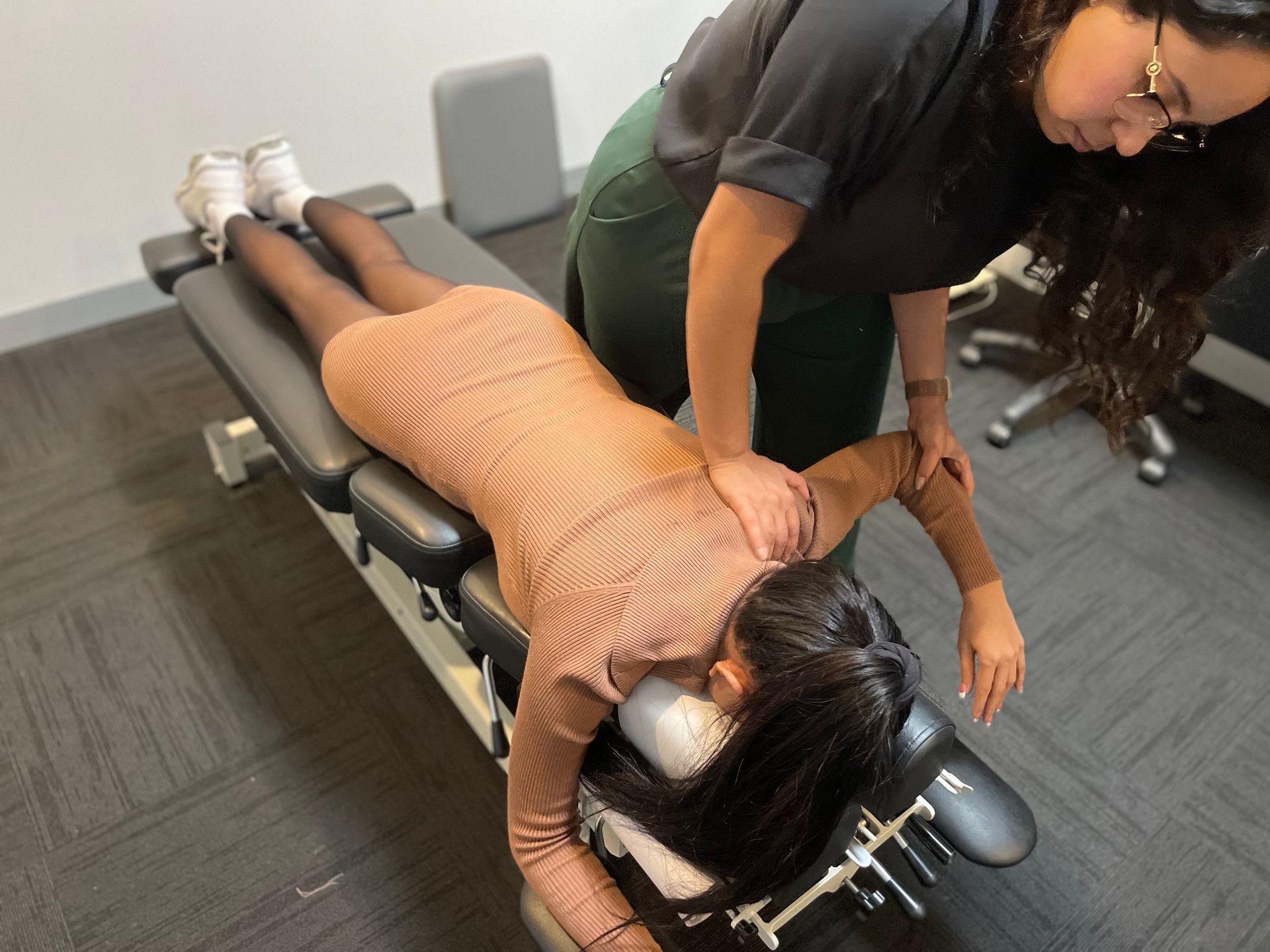
Implementing effective healing and mobility strategies is crucial to hip recovery and rehabilitation.
Physiotherapy and chiropractic care can help you regain hip strength and flexibility. Chiropractic care uses spinal adjustments to realign the spine and relieve nerve impingements that may be causing hip pain, while physiotherapy targets individual hip muscles and tissues.
Targeted exercises and stretches strengthen the hip joint muscles, making physiotherapy a common hip pain treatment. These exercises add stability, range of motion, and reduce inflammation. Physiotherapists may also use massage or joint mobilizations to speed recovery and reduce pain.
Hip pain sufferers can also benefit from chiropractic care. Chiropractors align the spine to reduce nerve interference and symptoms. They gently adjust spinal misalignments to improve body function, including hip mobility.
A hip pain recovery plan that includes physiotherapy and chiropractic care can be comprehensive. Physiotherapy targets hip muscles, while chiropractic care addresses spinal issues that may be painful. Combining these methods can boost muscle strength and spinal alignment, improving recovery chances.
Preventing Future Issues
Now that we've discussed hip pain recovery and rehabilitation, let's talk about prevention.
Preventing re-injury is essential for long-term hip pain management. Physiotherapy and chiropractic treatment prevent injuries, but how do they differ?
Exercises and techniques used in physiotherapy improve movement and function. A physiotherapist will evaluate your hip pain and develop a customized treatment plan. They may strengthen hip muscles, improve flexibility, and correct movement patterns. Physiotherapy addresses these causes to prevent future injuries and flare-ups.
However, chiropractic treatment emphasizes spinal alignment and nervous system function. Chiropractic adjustments can help prevent hip pain, but not as directly as physiotherapy. Proper spinal alignment improves musculoskeletal health by optimizing nerve communication.
Remember that both injury prevention methods have benefits. Physiotherapy addresses muscle imbalances and movement dysfunctions that cause hip pain. By promoting nerve function, chiropractic treatment improves spinal health and indirectly affects hip pain.
Collaboration between these two disciplines offers more opportunities for innovative hip pain management without relying on one approach or another. Let's examine how physiotherapy and chiropractic care can help hip pain sufferers.
Collaborative Care

Combined expertise from physiotherapists and chiropractors can provide holistic and innovative hip care that addresses issues from multiple angles.
Physiotherapy and chiropractic care approach hip pain differently. Physiotherapists use exercises, stretches, and manual therapy to improve hip strength, flexibility, and range of motion.
However, chiropractors align the spine and nervous system, which can help with hip pain. Patients can benefit from hands-on treatments, tailored exercises, and expert guidance by working with both professionals.
Physiotherapists and chiropractors treat all hip pain aspects together. Chiropractic adjustments correct spine misalignments that may cause hip pain, while physiotherapy improves muscle imbalances or weaknesses. These healthcare professionals can create customized treatment plans for immediate relief and long-term prevention by working together.
Collaborative hip pain treatment is more comprehensive and allows for progress monitoring. Physiotherapists evaluate movement patterns for hip pain-causing compensations or dysfunctions. Chiropractic physicians are skilled at detecting spinal misalignments that may affect hip nerve function. They can improve outcomes by regularly communicating about a patient's progress or setbacks during treatment.
Using physiotherapy and chiropractic care for hip pain has advantages over using just one. The combined expertise of these professionals allows for a more thorough evaluation, more treatment options, and more likely lasting results. Don't limit your hip pain treatment to one type. Benefit from collaborative care and consult a physiotherapist and chiropractor to get the most comprehensive and innovative treatment for your needs.
Final Thoughts
Finally, physiotherapy and chiropractic care can treat hip pain. Exercises and techniques improve hip strength, flexibility, and range of motion in physiotherapy. However, chiropractic care emphasizes manual adjustments to realign spine misalignments that may cause hip pain.
Both methods have benefits, but it depends on the individual's needs and preferences. Physiotherapy may be better for non-invasive hip muscle strengthening and rehabilitation.
Chiropractic care may provide better relief for hip pain caused by spine misalignments. Before making a decision, consult a physiotherapist or chiropractor. They'll evaluate your condition, diagnose it, and suggest a customized treatment plan.
Physiotherapists and chiropractors can also collaborate to treat your condition holistically. Whether you choose physiotherapy or chiropractic for hip pain, consistency is key. Following your treatment plan and doing rehabilitation exercises will help you recover and avoid future issues. Now we have finally answered the question: Is physio or chiro better for hip pain?
Frequently Asked Questions
Can Physiotherapy Or Chiropractic Care Completely Cure Hip Pain?
Yes, physiotherapy and chiropractic care can relieve hip pain and treat its causes. These treatments target root causes by improving joint mobility, muscle strength, and alignment.
While a cure may not be possible, these innovative therapies can improve function and reduce pain. Physiotherapy utilizes individualized exercises, stretches, and manual techniques to improve function and reduce pain. Chiropractic care optimizes nerve function through spinal adjustments.
Both modalities successfully relieve hip pain and improve quality of life. These innovative methods can help you relieve hip pain and improve your health.
Are There Any Potential Risks Or Side Effects Associated With Physiotherapy Or Chiropractic Treatment For Hip Pain?
Both physiotherapy and chiropractic hip pain treatments have risks and side effects. Some physiotherapy risks include increased pain or discomfort during exercises, muscle soreness after treatments, or worsening existing conditions.
Chiropractic manipulations may cause muscle strains or sprains, temporary pain, or blood vessel or nerve damage. Patients can reduce these risks by choosing an experienced professional.
Before starting any treatment, discuss the risks and side effects with your doctor.
How Long Does It Typically Take To See Improvement In Hip Pain With Physiotherapy Or Chiropractic Care?
Physiotherapy and chiropractic care usually improve hip pain after a few weeks. The timeline depends on severity and treatment response.
Both physiotherapy and chiropractic care aim to heal hip pain by addressing its cause. These methods can reduce pain, improve mobility, and boost function through targeted exercises, manual therapy, and personalized treatment plans.
Be consistent with your treatments and follow your doctor's advice for the best results. Try physiotherapy or chiropractic care for innovative hip pain treatments!
Are There Any Specific Exercises Or Stretches That Can Be Done At Home To Help Alleviate Hip Pain?
Home exercises and stretches can relieve hip pain.
One of my favorite exercises is the clamshell, where you lie on your side with your knees and feet together. Lift your top knee with your feet together like a clamshell. This exercise strengthens hip muscles, relieving pain.
Another great hip flexor stretch is kneeling on one knee with the other foot flat on the floor in front of you. Lean forward until your front hip stretches. Adding these exercises and stretches to your daily routine at home can reduce hip pain.
Can Physiotherapy And Chiropractic Care Be Used Together To Treat Hip Pain, Or Is It Better To Choose One Over The Other?
Combined physiotherapy and chiropractic care can treat hip pain. Each approach has its own benefits, but combining them can create a more holistic treatment plan.
Physiotherapy strengthens hip muscles through targeted exercises and stretches. This improves flexibility, stability, pain, and injury prevention.
Chiropractic care manually realigns the spine and joints, including the hip. This can reduce nerve pressure and improve alignment, reducing pain and improving mobility.
These two methods can address muscular imbalances and structural issues that may be causing hip pain, providing a more effective and long-lasting solution. Instead of picking one, why not see how they can collaborate to solve your hip pain?
